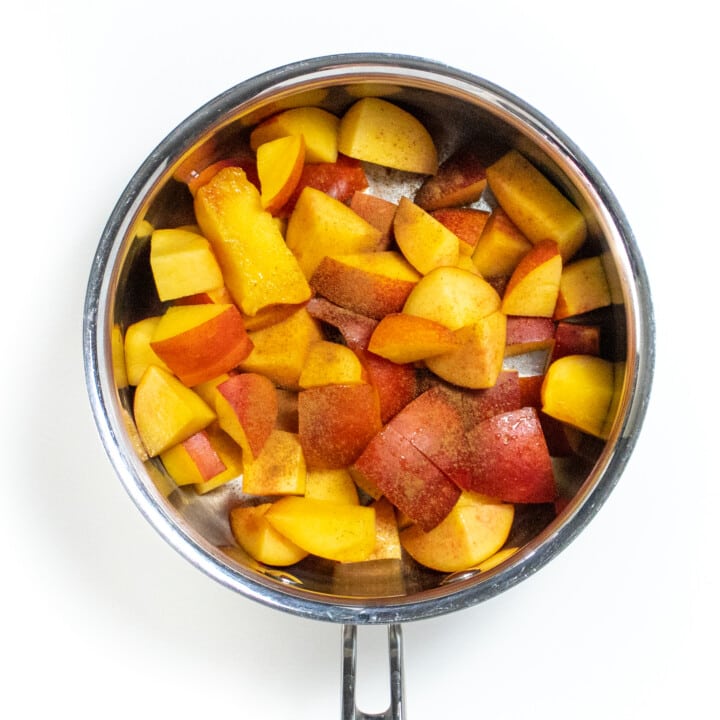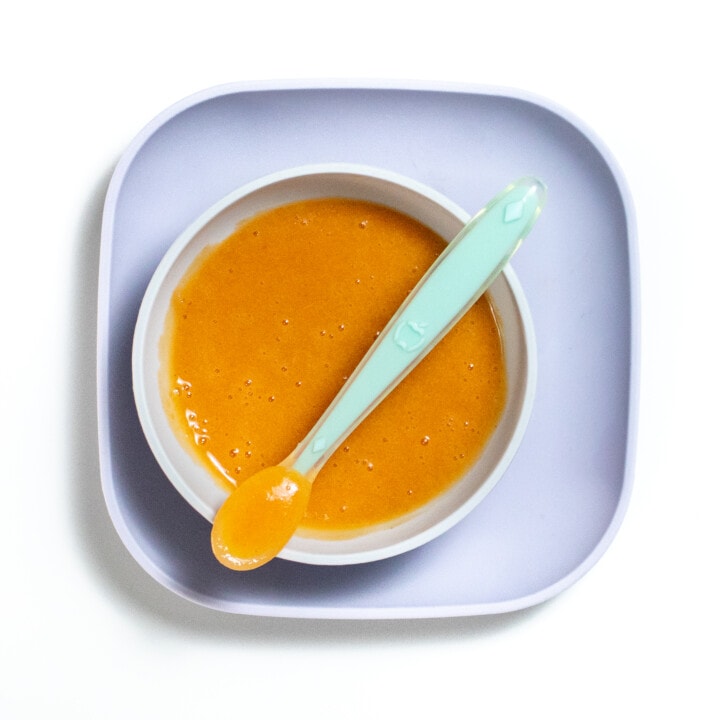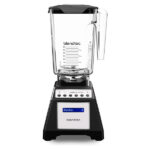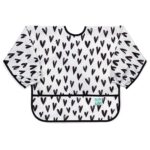
Get the recipe: Nectarine Baby Food: Puree & Baby-Led Weaning
In this guide, learn how to serve nectarines for your baby, for baby-led weaning, or making purees. Nectarines are a great source of fiber, antioxidants and are a great first food for babies 6 months and up. Serve them as a baby food puree, as a solid for the finger food stage, or for baby-led weaning.
Ingredients
For Puree
- 4 nectarines, pitted and chopped
- 3 tbsp water
- pinch cinnamon, cloves or nutmeg
For Baby-Led Weaning
- 1 ripe nectarine
Instructions
For Puree
- In a medium saucepan, add the chopped nectarines, water, and cinnamon.

- Cook over medium-low heat for 10 minutes or until the nectarines are super tender.

- Transfer all ingredients to a blender and puree for 30-60 seconds or until smooth.

For Baby-Led Weaning
- Cut peach into age-appropriate sizes and serve to baby.

Notes
Age: 6+ months
Yield: 2-3 portions for baby
Baby Puree: if you have very ripe nectarines, you can simply add them to a blender with a pinch of spice and puree until smooth.
Baby-Led Weaning:
Halved, ripe (6-9 months): Cut soft, ripe nectarines in half and remove the pit. A larger piece at this age helps your baby pick up this fruit easily. Feel free to leave the edible skin on (to help with grasping this slippery fruit) or you can peel it (and roll in finely crushed nuts, shredded coconut or hemp seeds).
Halved, sliced, or diced (9-12+ months): Halves or slices will still likely be the easiest for your baby to pick up at this stage. If cutting nectarines into smaller pieces to help baby work on their pincer grasp, you will want to roll them in another 'crumb' food as mentioned above.
Halved or whole (18-24 months): Depending on your toddler’s skill level, you can try offering either halved nectarines (pit removed) or a whole one (with the pit) so they can practice taking properly sized bites, chewing and swallowing. You can peel the skin or keep it on, but just know that it’s typical for toddlers to spit out the skin as they’re learning to eat. If offering a whole nectarine, it’s best to model eating one yourself, so that you can show them how to practice eating around this part.
Storage: for the puree - store in an air-tight container in the fridge for up to 4 months or in the freezer for up to 4 months. For baby-led weaning - you can store this recipe in the fridge in an air-tight container for up to 2 days.
Puree for Self-Feeding: Yes, it can be done! You can offer purees and still allow your baby to lead the way with self-feeding.
- Place a few spoonfuls of purees directly on the tray or in a bowl for your baby to dip fingers into. Model how to dip your fingers into the puree and bring them to your mouth, to taste some.
- Offer your baby a pre-loaded self-feeding utensil and hold it out for them to grasp or set on their tray.
- Use a solid food as a dipper. You can also offer a soft stick-shaped piece of food, such as a soft roasted carrot or bread lightly toasted and cut into strips to dip into the puree.
Did you make this recipe?
Tag @babyfoode on Instagram and hashtag it #babyfoode!



